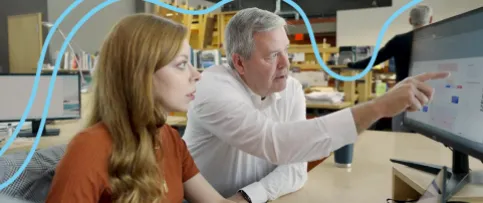Architect Joe Cannon, AIA, NCARB, shares how he approached the ARE and why getting a license was an essential career step for him.
Why did you want to become an architect?
I became interested in architecture at a very young age. As I learned more about the profession, I began to understand that architects can use their standing to better our built environment—and the future—through design, community efforts, and policy engagement. Given the necessary changes in the process of design, I believe that by being an architect, I can be at the forefront of challenging the ways our built environment evolves.
How did you approach your path to licensure?
It took me two and a half years to get licensed. I started my IDP in 2010, interning during the summers of 2010 and 2011. In 2012, I graduated from Syracuse and began taking the ARE in 2013. I finished my last exam in the fall of 2014. My strategy, once I started testing, was to devote four to six weeks to studying for each exam. I found I was most successful studying at a library or coffee shop—anywhere that wasn’t in the comfort of my own home.
How did you stay motivated to complete the ARE?
I wanted to be available for any opportunity in the future, personally or professionally, and not have to worry about the weight of going through the licensure process. By aggressively taking the ARE shortly after college and completing the licensure process, I can now live a life without limits and explore other pursuits.
My family, friends, and colleagues encouraged me to make strides in my journey to licensure. But I was also motivated by the architects I admire, and what it took to make it to where they are now. My suggestion for those thinking about licensure is to do the same: use your professional network to learn what others did to achieve their success, then apply that model to your life.
Why was earning a license important to you?
I knew that getting a degree was not enough and pressed forward to continue my growth and development as a professional. I look at licensure as an integral part of my professional responsibility. While I am glad that the seven tests are over and the IDP hours are all logged, I still have to move forward to better serve my clients and the profession.
With a license, I feel more committed and more invested in the field. With a license, there’s no glass ceiling on my career, and I’m more valuable to my firm. While you can work in architecture without a license, there are greater opportunities for those who are licensed.
You got licensed at 25. Are there any advantages or disadvantages to being younger than other new architects?
As a young architect and airport terminal planner, I can bring a new level of energy and innovation that incorporates my personal style for executing projects of all sizes. The fact that I am a licensed architect gives my opinion more weight when it comes to professional matters, such as client interface and business development. I’ve also garnered a lot of support from experienced professionals who know that if I am capable of tackling licensure at such a young age, I am capable of achieving higher professional milestones (such as project management) and am willing to take on innovative projects.
While being licensed at a young age has its advantages, it also comes with a great learning curve. Within the first 90 days of being licensed, I was appointed as a project architect. In this new position, I was faced with not only designing the project, but simultaneously coordinating with consultants on a daily basis. As a licensure candidate, I knew that all questions, big and small, were directed to the project architect—who in most cases was a well-seasoned professional. When I was elevated to a project architect, all those questions landed at my desk, and the responsibility was on me. Fortunately, I was surrounded by architects in my office who could provide sound advice.
You currently work as an airport terminal planning consultant. How did you find this particular area of practice, and what’s your favorite aspect of the job?
I was privileged as a child to travel to many places, and I was most fascinated by the airports I passed through. Airports became an interest and almost an obsession of mine, which is what ignited my passion for architecture and ultimately led me down the road to becoming an architect.
Working in the architecture division of a large company, I was offered the opportunity to join their aviation consulting practice. The capacity of airport terminal planner has made my childhood love of designing airports a reality. The best aspect of my position is planning the future terminal facilities of major airports that will one day welcome travelers from around the world—and maybe one of those travelers will be a child like me, who will find their passion for design.
What advice do you have for licensure candidates?
Plan to complete the ARE within a concentrated amount of time (one to two years, for example). It’s a costly venture, so be sure to seek out resources—see if your firm will support you by paying for your materials or tests.
Some tests are harder than others. In my case, I knew I would not learn anything about some of the exams by reading the study books alone. For tests where I needed more than just a book and flashcards, I attended either a weekend seminar or an evening course provided by my local AIA chapter.
We all experience failure, and overcoming the sense of loss and moving toward the next win can be difficult. It’s easy to throw in the towel or take a break, but that break can easily turn into years. The best advice I received from a mentor was, “No matter what happens, even if you fail a test, you have to keep on going.”
Joe Cannon is an airport terminal planner at JACOBS Leigh Fisher in San Francisco, CA.



